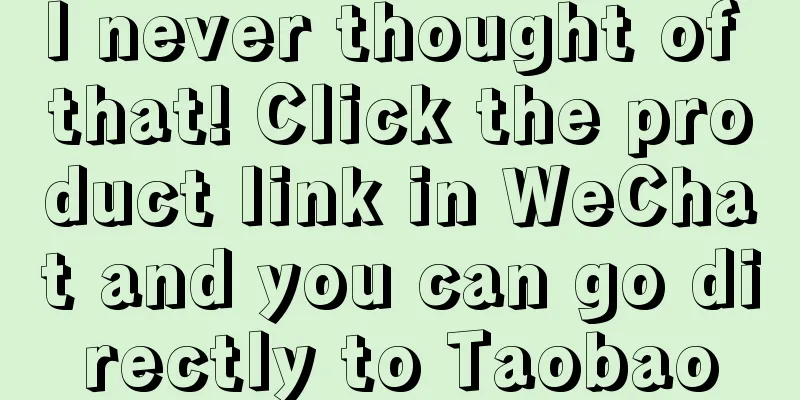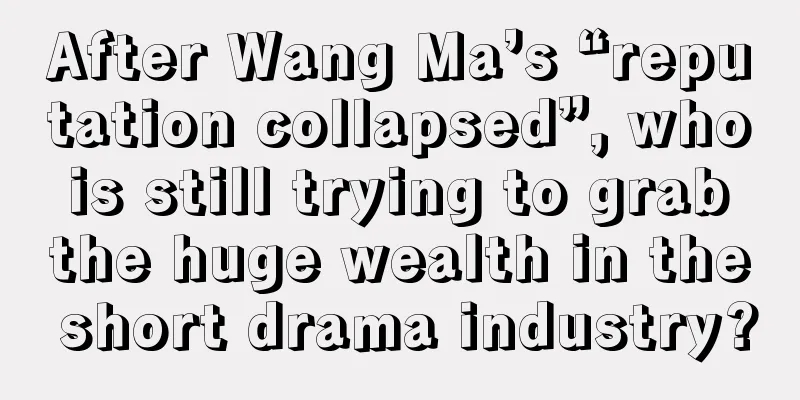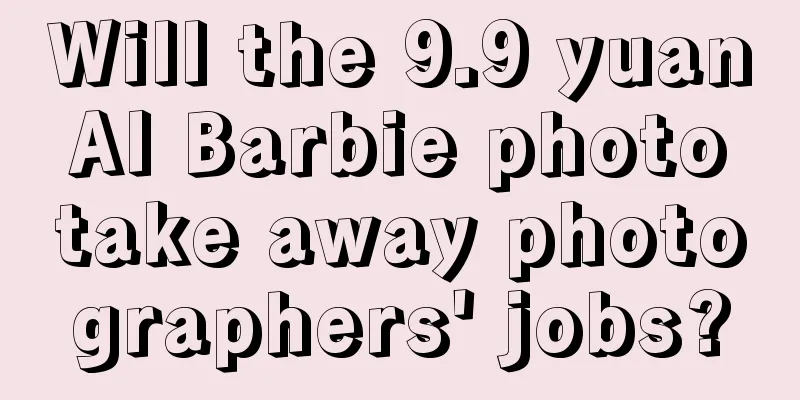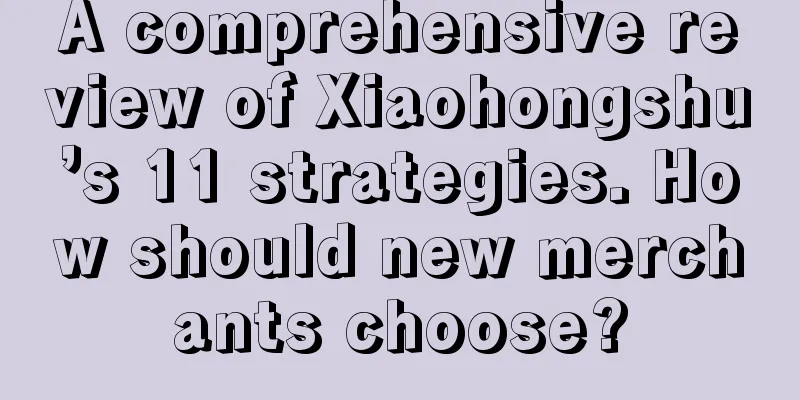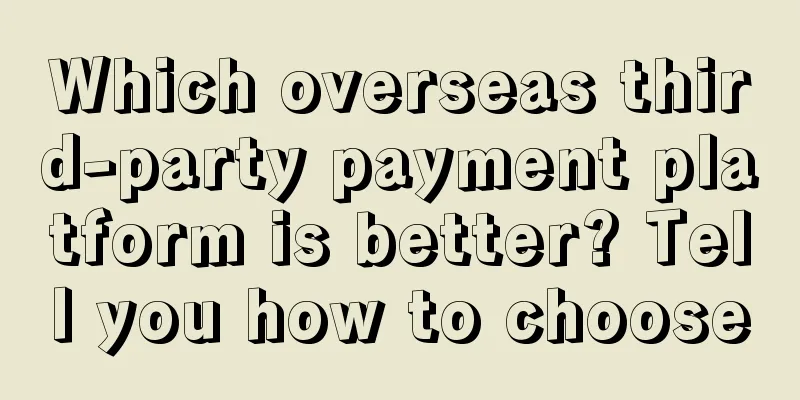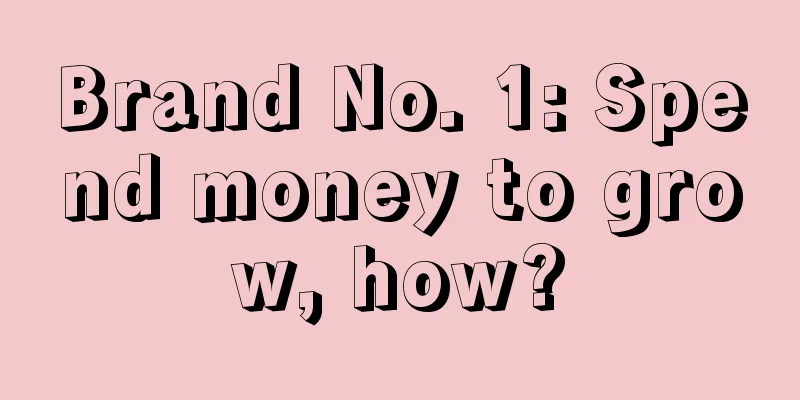In the AI era, it is necessary to relearn media knowledge
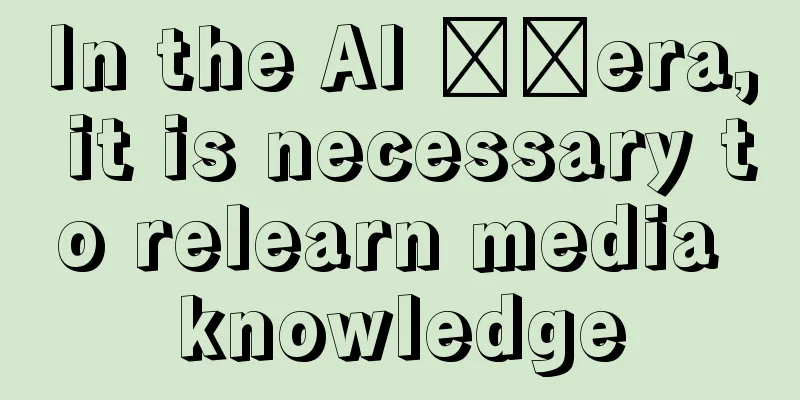
This is an old topic, but I'm going to repeat it again, so don't be impatient. Why? I think that the experience of P&G and L'Oreal ten or twenty years ago was a textbook for the consumer industry, but now the experience is no longer valid because in China, short video platforms such as Xiaohongshu, Douyin, and Kuaishou are developing faster than those in Europe and the United States. Currently, live streaming e-commerce and social e-commerce in Europe and the United States are learning from China. Moreover, in the current era of fierce development of AI and continuous emergence of new technologies, there is no unified version of new marketing success methods in the future consumer goods and technology industries. Now, if you ask me what to do on Xiaohongshu and Douyin, how to promote products, I can still tell you a thing or two. But if you ask me what to do next year, I really can’t tell you. However, many people are still following the old path with old experience, and they are taking the wrong path. Also, many people misunderstand that now it should be information that determines the medium, not the medium that determines the information. For example, when media such as movies and short plays appeared, they brought new narrative methods. Although the story routine is old, at least the expression method is completely different from the text era. Therefore, re-understanding such terms as media, channel, media, information, communication, marketing, users, customers, and key consumers will have a great impact on your career and company development. 01Where to start? Let's talk about media first. What is a medium? Imagine: you want to tell me a secret, but I'm not around, what will you do? You choose to call, send WeChat, or send an email, right? The phone and WeChat here are the "medium" for transmitting information. Simply put, a medium is a tool or method that helps us convey ideas, information, or emotions. In communication, a medium is a channel or system that carries and transmits information. It can be physical, such as letters; or electronic, such as television or the Internet. A medium is usually a bridge between the source of information and the recipient. This explanation is not difficult to understand. To put it in a more popular way, do you know the courier? The medium is like the courier. It acts as a carrier and can deliver information and items from one place to another. Now that we understand media, let's talk about a word related to it: media. What is media? You know this question. For example: self-media bloggers, big Vs who write public accounts, KOCs, these are all considered media. Simply put, media is a tool and platform for publishing and disseminating information. When you watch TV, listen to the radio, or read the news online, these are all media at work. However, the question is: since media can spread and release information, are people considered media? For example, if I am in a coffee shop and hear the conversation between two people next to me, are they considered media? People can play a similar role. If you hear a conversation between one or two people and tell others their information, this is also a form of communication. However, this kind of communication is not as formal and extensive as television or newspapers, so we will not count a single person as the media. So, if two people do not count, what if one person is talking to multiple people? For example: a KOC, he holds a salon to cover 30 people; a teacher teaches dozens of students in a classroom. This can be counted. According to communication theory, the smallest media unit is micro-media, which covers more than 100 people and is organized, continuous, and influential. It can be considered as media. Remember this sentence, it is very important. Therefore, the most important difference between media and media is: media is a tool, a bridge, and media is an entity that uses tools to spread information, and is a person or organization that transmits information through a bridge. To put it more simply: the media is like a courier, and the media are the courier companies and outlets. 02A word related to media is: channel. What is a channel? For example: I am a bookstore owner and I have a lot of books to sell, but I can't just rely on the customers in the store. What should I do? At this time, I have five options: physical stores, online stores, wholesale, and social media. They can all be called channels. As long as they can reach customers and sell products, they are all channels. In marketing and communication, a channel refers to the path for information, goods or services to be transmitted from one point to another. It can be physical, such as stores and distribution networks, or virtual, such as: television, the Internet, etc., which are effective channels. After reading this, I guess you are already confused. How to distinguish the media, the media, and the channels? In a nutshell:
Channel: It is the path and method to contact customers and sell products. For example, roads and railways refer to the specific routes and methods. It is not very clear. I have told a story: I am a new farmer. My watermelons are ripe. I know that Mr. Zhang from Zhejiang wants 5,000 kilograms. How can I transport the watermelons to him? Find a truck to transport them. The truck is the medium because it helps me transport the watermelons from the farm to Mr. Zhang. However, the truck is not an independent individual. It is managed by the logistics company. I have to find the logistics company. The logistics company is the medium because it uses trucks to transport the watermelons. After the logistics company agreed, the watermelons were loaded. In order to deliver the watermelons as quickly as possible, the truck driver chose two highways, G2 (Beijing-Shanghai Expressway) and G3 (Beijing-Taiwan Expressway); the two highways are channels, because they are specific routes that deliver the watermelons directly to the customer's door. You said again that you don't want to go offline anymore, you want to go online. Online is also OK. I publish products on the e-commerce platform. The e-commerce platform is a medium because it helps me convey the information about selling watermelons to potential customers. As a store owner, I publish information through the platform to communicate with customers. I am the medium because I use the e-commerce platform (medium) to promote and sell watermelons. Customers place orders on the platform, the platform arranges for express delivery, and the express company chooses the best route. The delivery path is the channel because it is the specific route from the product to the customer. Is this clear enough? Let me summarize: The concept of media is relatively broad, including the concept of medium. The focus of channel is to examine the way the audience obtains information, that is, the place closest to people. Channel can include medium, but medium cannot include channel. Because channel uses medium to realize the transmission of information and goods, while medium is only a part of channel, which is a specific tool used to transmit information. If you really don't understand, just think about it: a channel is a big network, like a spider web, used to reach and connect the audience. The medium is each thread on the network, helping to transmit information. The media is the spider, using the thread (medium) to move on the network (channel) and spread information. Note: The choice of channel is crucial to the effectiveness of information communication. 03After understanding the differences between media, medium and channel, let's talk about information. What is information? It's very hot in Beijing today, remember to wear sunscreen when you go out. The idea I convey is information. It can be a description of the weather or a suggestion. Simply put, information is the news or knowledge I want to tell you. Did you know? There are many types of information, including books, audio, video, data, pictures, symbols, logos, and policy documents. Many companies are confused and don’t know what kind of information to produce to attract customers. What should they do? I came up with a way to divide the information into four parts according to the scenario: Information, data knowledge, models I call hot events, current affairs commentary, company news, social dynamics, celebrity trends, and various unknown sources of news information. These contents are full of WeChat Moments, Weibo, and daily chats. Its value is relatively small, but the quantity is large, and it can almost be classified as noise. My way of dealing with it is that, except for the hot news in the industry circle, I basically don’t read other things. Because it is easy to overload the brain and leave no time to think about other things. It is worth mentioning that in information, we must distinguish between the five basic concepts of facts, events, opinions, truth, and uncertainty. A fire broke out in a certain place, on what date, where a certain conference was held, etc. These are facts, which are specific and verifiable time or data, and both are indispensable. Events are the state of what is happening. For example, a company releases an AI product that affects multiple SaaS companies. Opinions are external views on something, such as climate change. Truth is verified facts and principles. Uncertainty is a situation that is not yet fully clear or cannot be verified. For example, "Will it rain tomorrow?" Express your opinions boldly and strongly, don't be afraid of making mistakes, but hold them lightly to prevent only seeing evidence that supports your own opinions and ignoring contrary evidence. From the company's perspective, the information is divided into: cases, experiences and documents. Cases, specific experiments or data verification, are very detailed and valuable, but difficult to obtain. Experience, including some "how to do" content, such as operation guides, tool applications, etc. Documents, industry-related research reports. So, the question is: What is the most important difference between data and knowledge? I think that data is the company's original information and data, which has not been processed, while knowledge is processed and turned into methods that can be understood and used by people. This is the biggest difference. Models, also called refined concepts, help us better understand and apply knowledge. For example, when large companies communicate every year, they often summarize a series of knowledge into a formula, similar to FACT or 5A people. These formulas simplify complex information and make it easier to spread and remember. In addition, there are many subdivisions of information types in marketing. However, understanding these basic types can at least allow you to understand the categories of information in the communication scenario and deliver more appropriate information to customers. Speaking of this, I suddenly thought of a question mentioned at the beginning: Does the medium determine the information? Or does the information determine the medium? In fact, the medium determines the information and affects the form and content of the information. For example, short videos will focus on visual effects, and self-media will rely on text descriptions. Information determines the medium, which means choosing the appropriate medium based on the purpose of the information being conveyed. For example, if I want to convey detailed data, written reports and electronic documents may be more appropriate, while if I want to convey a notice, oral expression and text messages are more effective. Why do I support the latter? At present, the media attributes of major platforms have become so granular that they cannot evolve again. This is the case in the short term. If you understand these points, you will not be easily influenced by the crowd in communication. 04After talking about information, let's talk about communication. What is communication? I am the marketing director of a company and I want to convey new products to potential customers. I can influence customers through short videos, emails, advertising, offline press conferences, etc. The whole process of transmission is communication. Simply put, communication refers to the process of transmitting information, ideas, and emotions from one person or group to another through a certain medium. This transmission can be carried out in many forms such as language, text, pictures, and sound. The purpose of communication is simple, to ensure that the information is accurately conveyed, influence the audience, and achieve the expected business goals. However, when we talk about communication, we cannot just talk about communication. Many people often misunderstand the "principles of communication" and "the essence of communication". The principle of communication refers to the process of information from sender to receiver, which involves seven steps and elements, including information source, encoding, media, decoding, receiver, feedback and noise. Throughout the process, the sender and the receiver must constantly communicate and give feedback to ensure that the information is understood and applied. Don’t quite understand? Let’s take an example: a technology company launches a new product. The information source is the marketing department, the encoding is the product introduction and advertising copy; the media is TikTok, Xiaohongshu and KOL. The decoding is the product information that the audience understands after reading the copy. The receiver is the potential customer, and the feedback is the customer's comments, likes or purchase behavior. And what about noise? It refers to slow video loading, ad blocking software, customers' misunderstanding of technical terms, etc. It is important to understand these 7 steps, because only by delivering the information source to potential customers in the shortest distance can it directly influence their purchasing decisions. So, what is the essence of communication? Here we need to mention a word called "affordance". This concept mainly describes the potential functions or uses that an object or environment provides to people. Simply put, when you look at something, you naturally think about what it can be used for. When you see a chair, you think it can be used to sit, this is the affordance of the chair; when you see a mobile phone, you think it can be used to make calls, send messages, surf the Internet, and watch videos, this is the affordance of the mobile phone. ...But, do you know? Affordance is very important in communication. The media and information you choose should meet the audience's expectations and usage methods, so that it will be effective, otherwise the effect will be greatly reduced. Imagine if I use short videos to deliver emotional and interesting jokes, would others like to watch them and would it be more attractive to young people? If I use it to publish complex product descriptions and charts, would it be boring? This is the essence of communication, which involves both functional and relational aspects. Functionality refers to the value of the information itself. Relationality refers to the actual connection between people behind the information, which includes the emotional value that everyone often talks about. On a deeper level, it also includes physical affordance, cognitive affordance, social and cultural affordance, and emotional affordance. What does it mean? Don't worry, I'll explain them one by one. Cognitive affordance refers to the way information is understood. For example, red has different meanings in different scenarios. The red color of a traffic light means "stop" and the green means "go". Cultural affordance refers to the meaning of information in different cultures. For example, the like and share buttons on the Internet represent a kind of social interaction. In China, kissing on the cheek is associated with affection, while in the United States, it is a social etiquette when meeting. Emotional affordance refers to the emotional response brought about by information. For example, seeing a warm family photo will make you feel warm, and listening to relaxing and pleasant music will make you feel relaxed. Understanding different affordances can help you better understand and use information. Of course, I also want to talk about some deeper issues about new media, communicators, effects, social phenomena (such as the digital divide), etc. For example: in the early days of the website, ordinary people had no right to speak. Later, everyone became a self-media, a large amount of user-generated content (UGC) appeared, and the platform began to "decentralize". However, with the advancement of technology, the decentralized situation was broken. Due to the influence of the Matthew effect, power is still concentrated in a few large platforms. "Re-centralization" has become a new symbol, leading to information shielding and black box operations. Now, large companies control major social media and content platforms, and the Internet has become "recentralized." They use data to train AI and algorithms. This change makes us not know which information is hidden and which is displayed; this not only challenges the fairness of information dissemination, but also leads to the emergence of new information closures and black box operations. So, what inspiration can it bring to brand communication? First, you should know what customers your product is targeting. Second, choose a more sensible communication platform for your goal. Third, multi-channel communication should also be segmented and focused on a certain category to avoid being too broad. Fourth, make rational use of the technology provided by the platform and use data to develop communication methods; Fifth, pay attention to customer feelings and optimize the brand's content and expression methods based on customer reactions. By the way, I have to mention that customer is not the same as user. Customer is the one who pays, and user is counted whether he pays or not. For example, there are some regular readers who have been following me since 2019, but they don’t spend any coins, don’t give tips, don’t forward, don’t like, and just read my articles for free. Should I maintain them? I will definitely be exhausted. So, I only focus on my customers and their problems. In summary, only by understanding the media can we do a good job of communication. With the explosion of new species, we have reached an era without universal methodology. Every company that wins will be different when reviewed. I hope you can understand the media, understand the information, attach importance to channels, pay attention to customers, and stick to the basics while being innovative. |
<<: The popular short drama on Douyin was finally taken down by Pinduoduo
>>: Rethinking Satisfaction Research from Now on
Recommend
Data tracking and user behavior analysis: Start with the end in mind and break it down layer by layer
Friends who are planning to read this article. Thi...
What abilities are needed for overseas marketing?
To engage in overseas trade, you need to master ce...
Amazon finally started to fight back after SHEIN and TEMU were so popular
In the empire of e-commerce giant Amazon, the low-...
Hua & Hua's new work "Sausage Mouth" is so ugly
In the era of information explosion, exaggerated a...
Where is the entrance to Amazon Seller Central? How to enter?
For Amazon merchants, there is a lot of informatio...
What is prohibited from selling on Shopee Malaysia? What products are not allowed to be sold?
What is Shopee prohibited from selling in Malaysia...
Single product account, money everywhere!
With the rise of live streaming, the track has als...
Is Lazada reliable? What are its advantages?
When choosing an overseas platform to open a store...
Rebirth: I am doing e-commerce operations
This article uses a fictional story to tell how an...
Shopee seller deposit payment reminder notification
The reminder notice for Shopee sellers to pay the ...
How does eBay distribute products accurately? What is the method?
As the eBay platform continues to grow, more and m...
After reviewing Xiaohongshu’s first brand list, we found that this is how to cooperate with buyers to make money
In this era of information explosion, disappearing...
How do Chinese people buy things on Lazada? How do they shop?
If our domestic friends want to buy things on over...
Alipay's "effective self-rescue" starts with "one tap"?
This article deeply analyzes the logic behind Alip...
B station UP host on Douyin: Some people have more than 20 million fans and sales of over 100,000 products, but they still can't relieve the anxiety of monetization
Introduction: The up-stopping incident on Bilibili...


